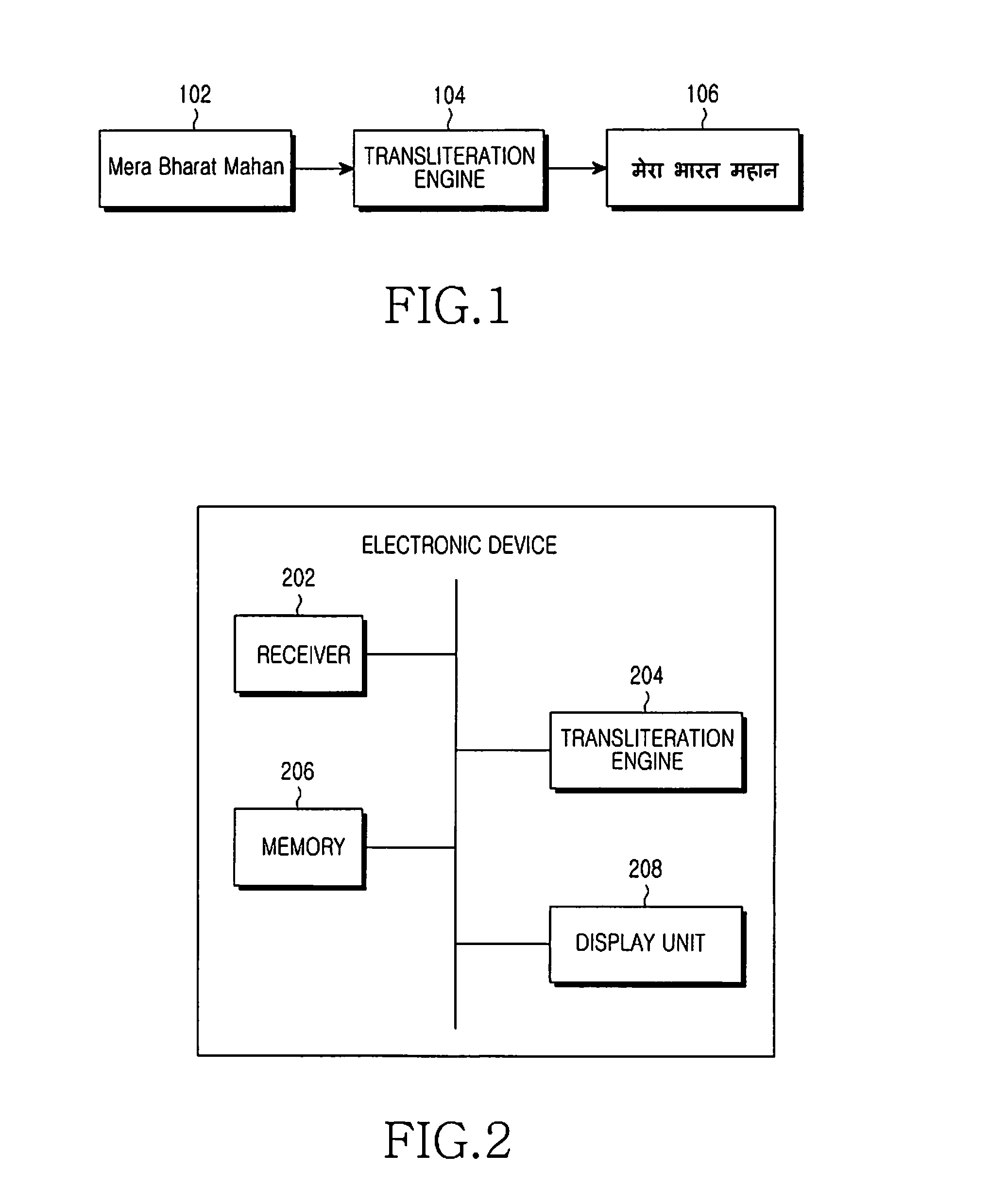Method and device for transliteration
a technology of transliteration and electronic devices, applied in the field of electronic devices, can solve the problems of excessive memory use, inability to use these electronic devices to conveniently input text in their native language, and inability to do so
- Summary
- Abstract
- Description
- Claims
- Application Information
AI Technical Summary
Benefits of technology
Problems solved by technology
Method used
Image
Examples
first embodiment
[0033]FIG. 3 illustrates a method for transliteration, in accordance with the present invention. To explain this embodiment, references will be made to FIG. 2. However, the present invention can be explained with help of any other suitable embodiment. The method for transliteration begins at step 302. At step 304, input in a source language is received by the electronic device 200 from a user. Examples of the input include, but are not limited to, word, words, sentences, phrases, and paragraphs. The input can be received by using the receiver 202 provided at the electronic device 200. The user can type the input by using a keypad, keyboard, virtual keypad, or a software keypad / keyboard available at the electronic device 200.
[0034]After the input is received, source language sub-phonetic units for the input are created at step 306. Consider an example, in which a Hindi word ‘asmanjas’ is received as an input by using source language as English. Once ‘asmanjas’ is received as input, s...
second embodiment
[0040]FIGS. 4A and 4B illustrate a flow diagram depicting a method for transliteration, in accordance with the present invention. To explain this embodiment, reference will be made to FIG. 2 and FIG. 3. However, the present invention can be explained with help of any other suitable embodiment, all in accordance with the present invention. The method can include more or fewer steps than those depicted in FIGS. 4A and 4B. The method is initiated at step 402. At step 404, input is received in source language. Examples of input text include, but are not limited to, a word, sentence, phrases, and paragraphs. At step 406, source language sub-phonetic units are created for the input (as explained in FIG. 3).
[0041]At step 408, correspondence is generated between each source language sub-phonetic unit and each target language sub-phonetic unit, by using mapping of the source language sub-phonetic unit with the target language sub-phonetic unit. In an example, the correspondence between the s...
PUM
 Login to View More
Login to View More Abstract
Description
Claims
Application Information
 Login to View More
Login to View More - R&D
- Intellectual Property
- Life Sciences
- Materials
- Tech Scout
- Unparalleled Data Quality
- Higher Quality Content
- 60% Fewer Hallucinations
Browse by: Latest US Patents, China's latest patents, Technical Efficacy Thesaurus, Application Domain, Technology Topic, Popular Technical Reports.
© 2025 PatSnap. All rights reserved.Legal|Privacy policy|Modern Slavery Act Transparency Statement|Sitemap|About US| Contact US: help@patsnap.com



